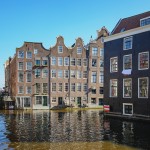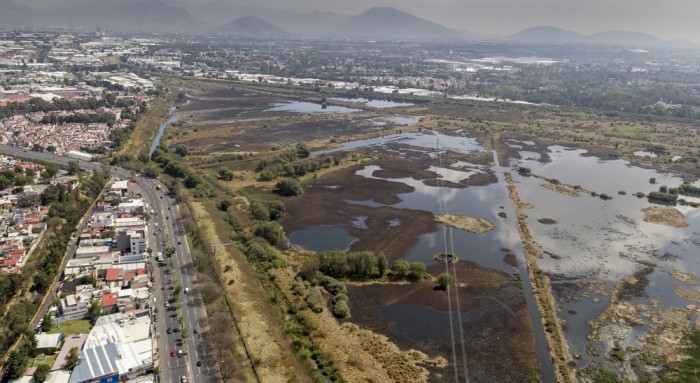 The Netherland´s history and water management shares some interesting similarities with the hydraulic infrastructure of the pre-Hispanic city of Tenochtitlan, today known as Mexico City. Getting to know the two countries’ similarities and differences is particularly valuable in order to understand their present-day water-related difficulties.
The Netherland´s history and water management shares some interesting similarities with the hydraulic infrastructure of the pre-Hispanic city of Tenochtitlan, today known as Mexico City. Getting to know the two countries’ similarities and differences is particularly valuable in order to understand their present-day water-related difficulties.
If it was not for the Netherland´s complex hydraulic system, approximately 60% of the surface of the Netherlands would be flooded. Flood risk management has consequently become a fundamental part of Dutch policy.

At city level, Amsterdam’s hydraulic management aimed at keeping the city safe from flooding recalls the complex hydraulic management of Tenochtitlán. Both cities comprise dams, floodgates, navigation channels and flood control. The reason behind this resemblance is the fact that both places are founded on water. While Mexico City was founded on lakes, Amsterdam is located below sea level.
The Spanish conquest drastically transformed the precise hydraulic management that had been carried out in the pre-Hispanic city. The alterations in the city’s infrastructure and ejection of basin water gave rise to the seemingly endless water management difficulties that continue up to today. Even in the 21st century, Mexico City is still facing a problem that began at the time of colonization. The Emitter Tunnel East, a gigantic engineering project that provides high-capacity infrastructure, is expected to finally solve the issue of dislodgment of basin water.

The Dutch are not working against nature, and their urban water management approach seems highly effective. By making good use of the surroundings, open rivers and the sea have been connected to control water levels and to keep Amsterdam safe from flooding.
Despite precise water management, tragedies have occurred in the past. A great flood, which took place in the 1950s, still remains in people’s memory and reminds the Dutch of their fragility vis-a-vis the sea. This is yet another coincidence with the history of Mexico City, where a great flood occurred in the exact same year as it did in Amsterdam, to be precise in 1953. This unfortunate incident has also remained in the Mexican people’s memory and has led to the construction of the Nochistongo Pit, which was the first construction work aimed at dislodging water outside the basin.

Climate change imposes new challenges on the two cities, namely greater precipitation and sea level rise. Sea levels are foreseen to rise by two centimeters per year in Mexico´s rural areas while rainfall could be up to 70 mm in two hours; as it happened in Mexico City on 28th of July 2017.
Instead of preparing for more tragedies to happen or evacuating vulnerable areas, the Dutch are preparing to adapt. Knowing that the amount of water entering their cities will inevitably increase, they have started to conceptualize and plan their cities like a water-absorbing sponge.
With a very creative and innovative vision of building infrastructure to dislodge water from the city, they have created temporary water storage facilities at different scales: green roofs capable of absorbing up to 60,000 liters of water, multipurpose spaces which function as parking lots, infrastructure for collecting and discharge water in the canals or public playgroundsthat turn into huge pools in times of heavy rainfall.
The goal is to control water instead of allowing water to control the city. Amsterdam receives water as if it was a sponge, containing, storing and taking water where necessary. Therefore, the Dutch turn a threat into an opportunity and keep their cities safe.
Thanks to this strategy, the Dutch have not only become resilient to extreme rainfall, but they are also setting a good example, which shows that it is possible to invest in adaptation without multi-million dollar budgets or far-reaching hydraulic construction works.
